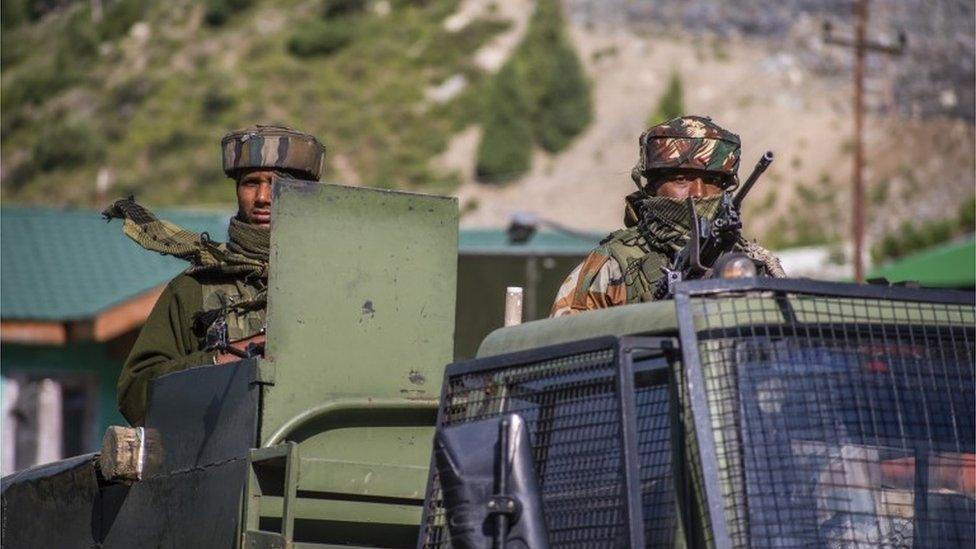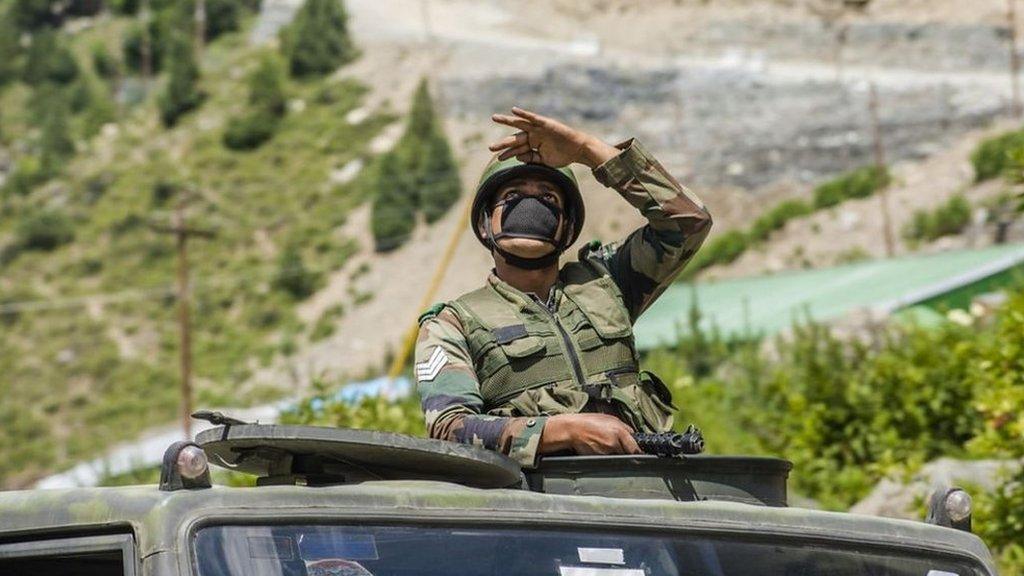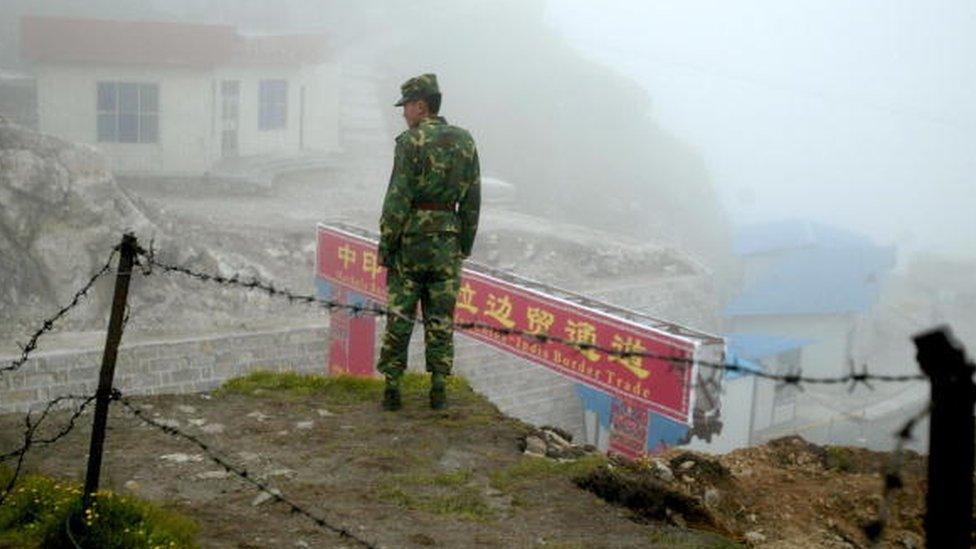Pangong Lake: India and China to pull back from disputed border
- Published

Indian troops near the border with China
India and China are to pull back troops from part of their disputed Himalayan border in what's seen as a breakthrough following a deadly clash in June.
India's defence minister said the move to withdraw troops in Ladakh was the result of "sustained talks" between the nuclear-armed neighbours.
His remarks came a day after a similar announcement from China.
Tensions have been high since the clash that left 20 Indian soldiers dead and a number of reported Chinese fatalities.
Defence Minister Rajnath Singh told India's parliament that since September, both sides had been communicating through military and diplomatic channels. He said that after nine rounds of meetings between senior military commanders, "we have been able to reach an agreement on disengagement in the north and south bank of the Pangong Lake".
A spokesperson for the Chinese Ministry of National Defence said on Wednesday that a "synchronised and organised disengagement" from Pangong Tso lake had started. Colonel Wu Qian said the disengagement was in accordance with consensus reached by both sides at during military commander-level talks.
Indian and Chinese troops have been facing off on the north and south shores of the glacial lake that lies in territory claimed by both sides.



Mr Singh also told parliament that China had "mobilised a large number of troops and armaments" along the border in Ladakh, and had illegally occupied 38,000sq km (14,700sq miles) of Indian territory in the region.
China disputes such claims. But in June last year, satellite images suggested that China had built new bunkers, tents and storage units for military hardware overlooking the Galwan river.
The disputed 3,440km (2,100 mile) long de facto border - called the Line of Actual Control, or LAC - is poorly demarcated. The presence of rivers, lakes and snowcaps means the line can shift. The soldiers on either side - representing two of the world's largest armies - come face to face at many points.
But the June clash - fought with sticks and clubs, not guns - was the first fatal confrontation between the two sides since 1975 and followed earlier non-deadly violence. China has never commented on reports that it too suffered fatalities.
The two armies also clashed in January this year along the border in the north-east in India's Sikkim state, leaving troops on both sides injured.

The Pangong Tso lake has seen scuffles between troops on both sides
"I want to assure this house that in these talks we have not conceded anything," Mr Singh told parliament.
"There are still some outstanding issues with regard to deployment and patrolling at some other points along the LAC in Eastern Ladakh. These will be the focus of further discussions with the Chinese side," he added.
Relations have deteriorated since June as both sides traded accusations.
In August, India accused China of provoking military tensions at the border twice within a week. China denied both charges and blamed India for the stand-off.
In September, China accused India of firing shots at its troops. India accused China of firing into the air.
Ros Atkins looks at what happened on the India-China border in June 2020
Related topics
- Published12 September 2020

- Published26 June 2020

- Published14 December 2022
